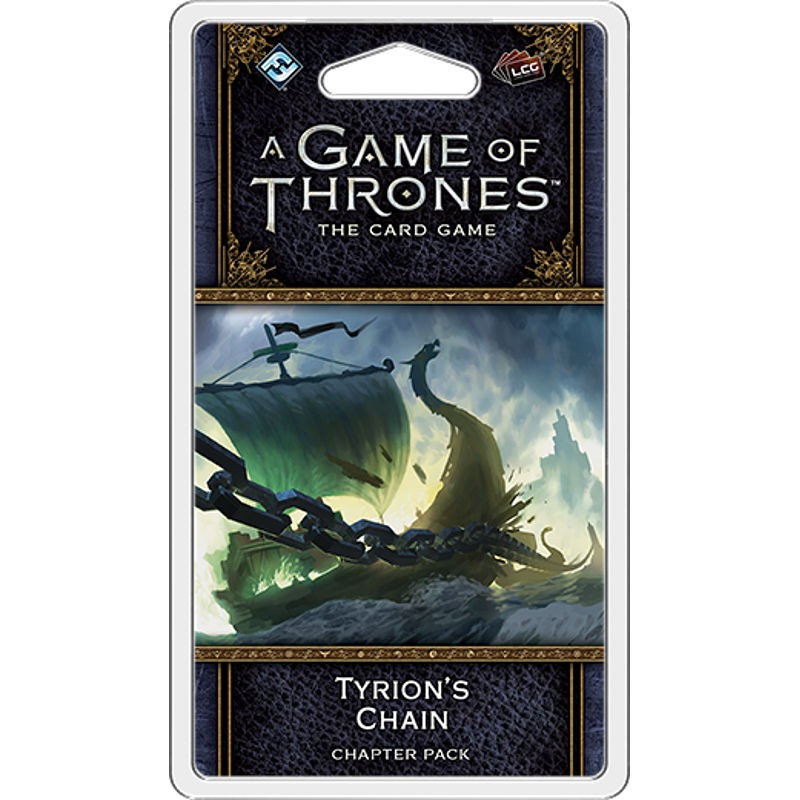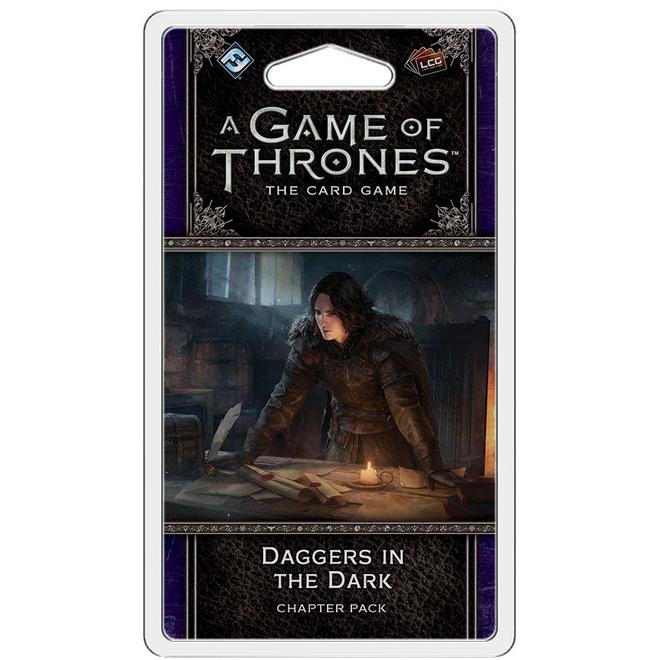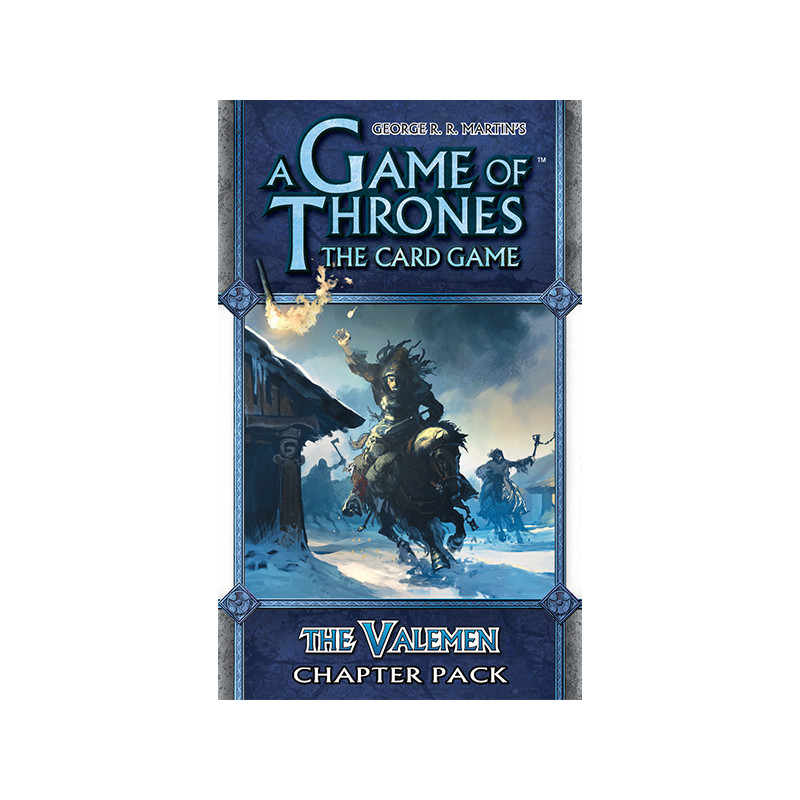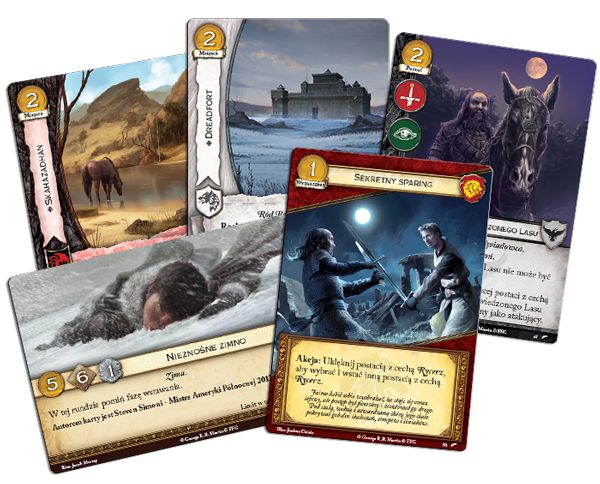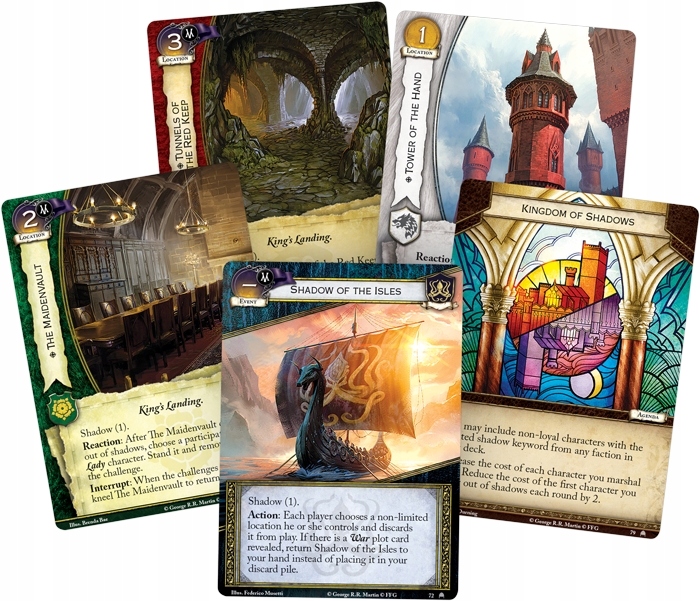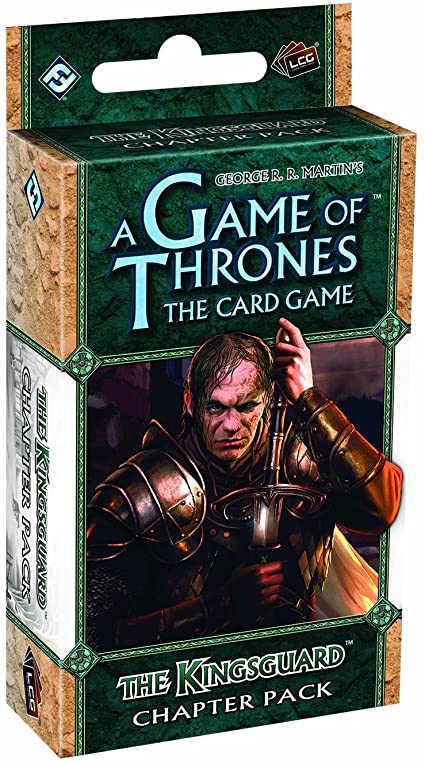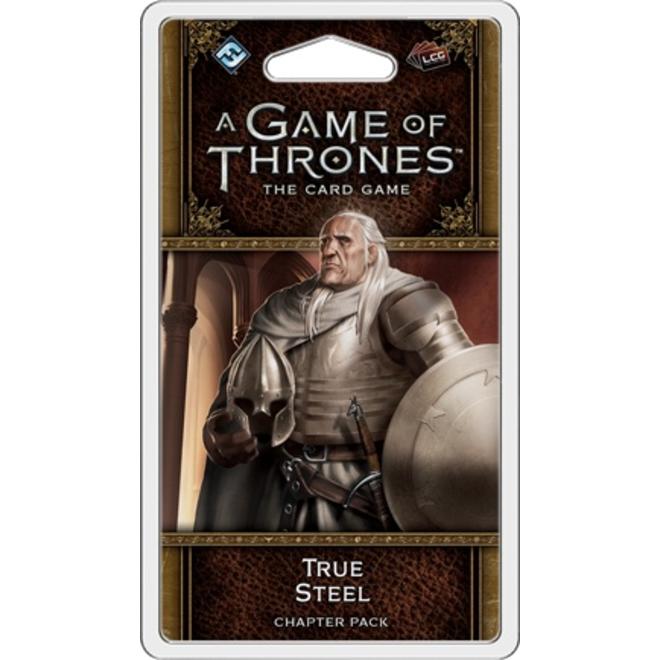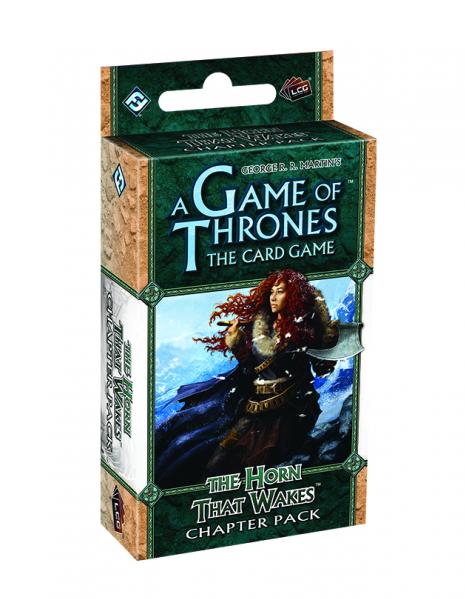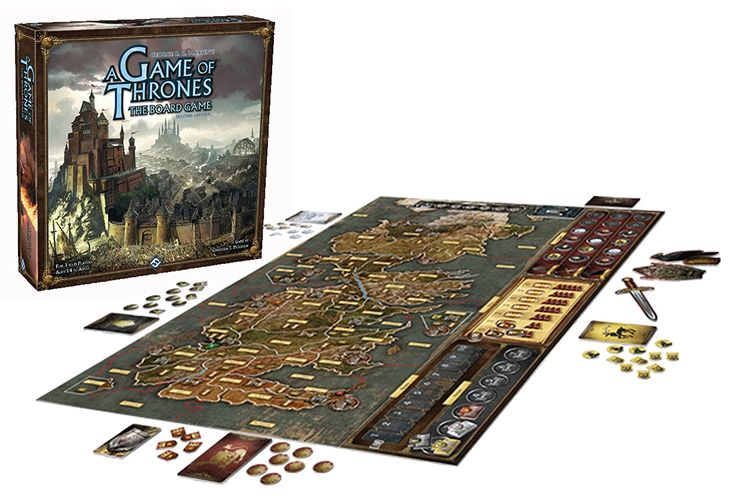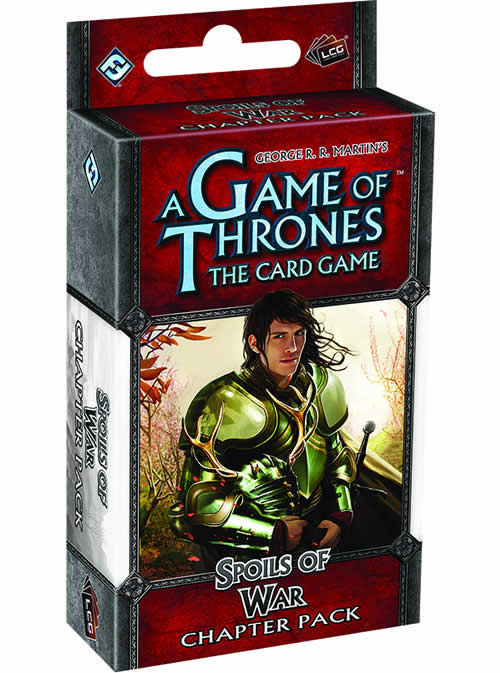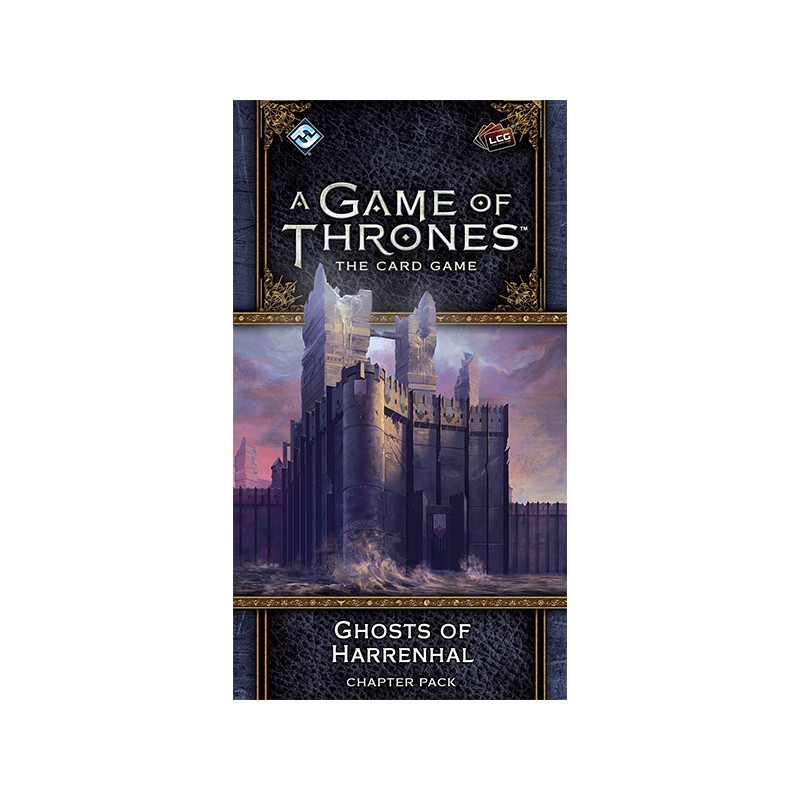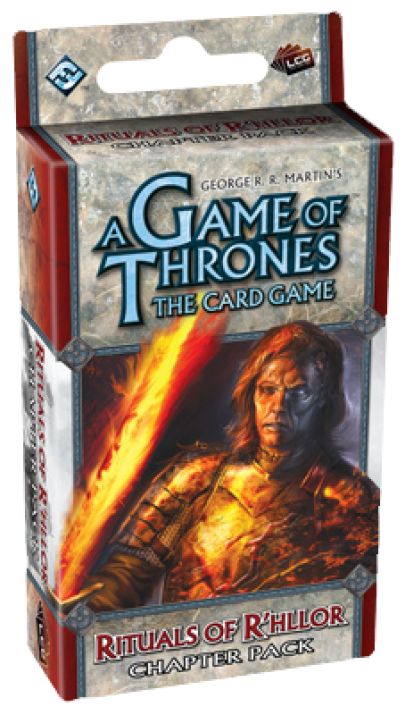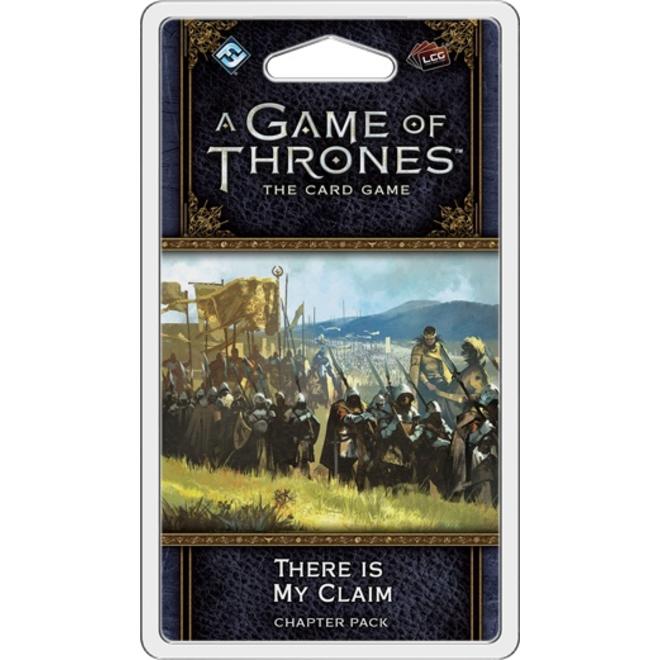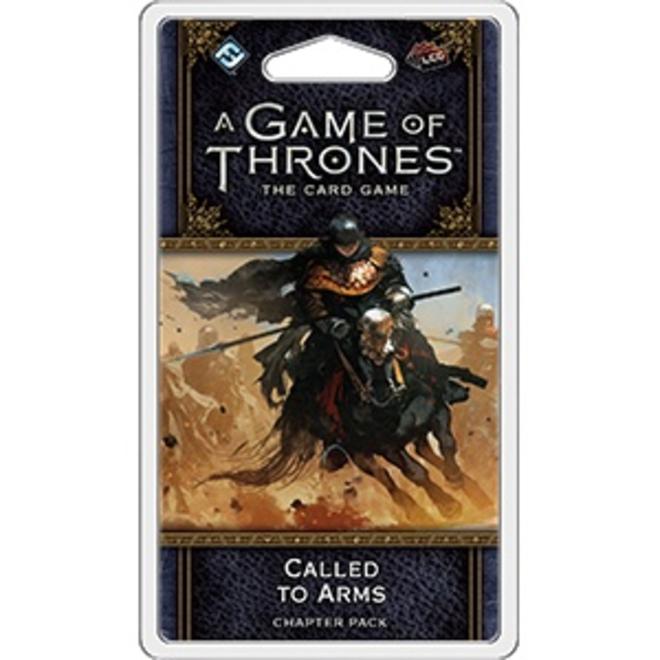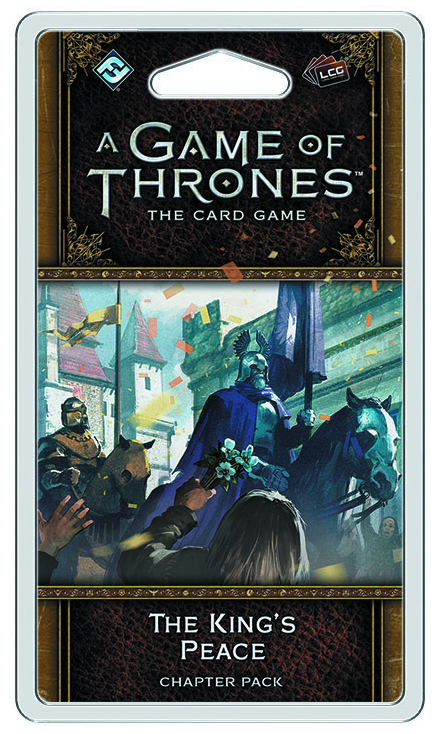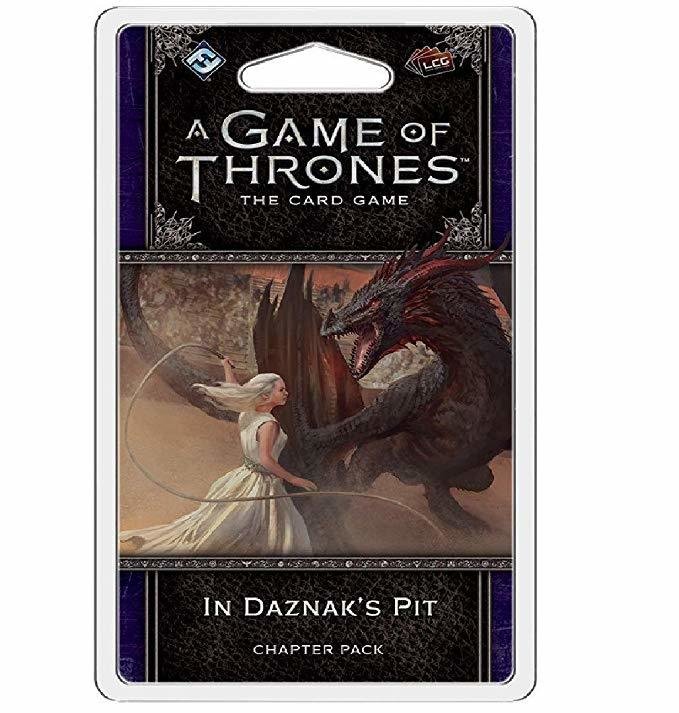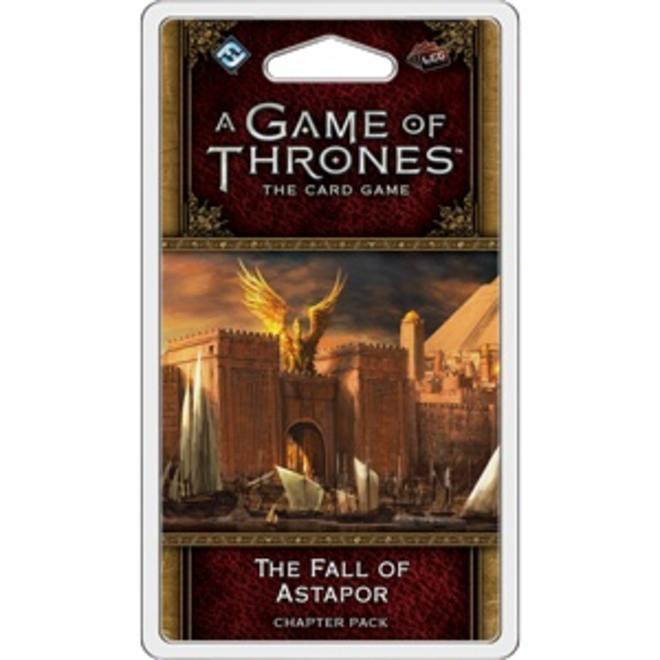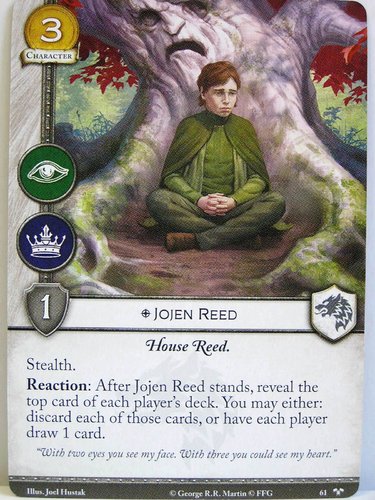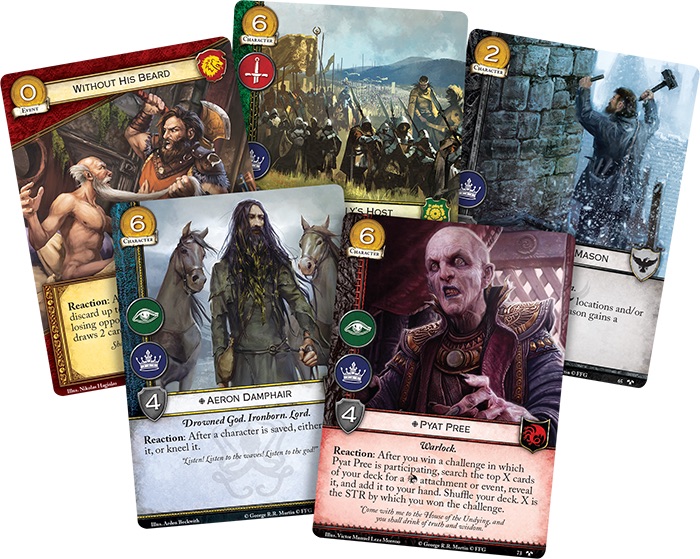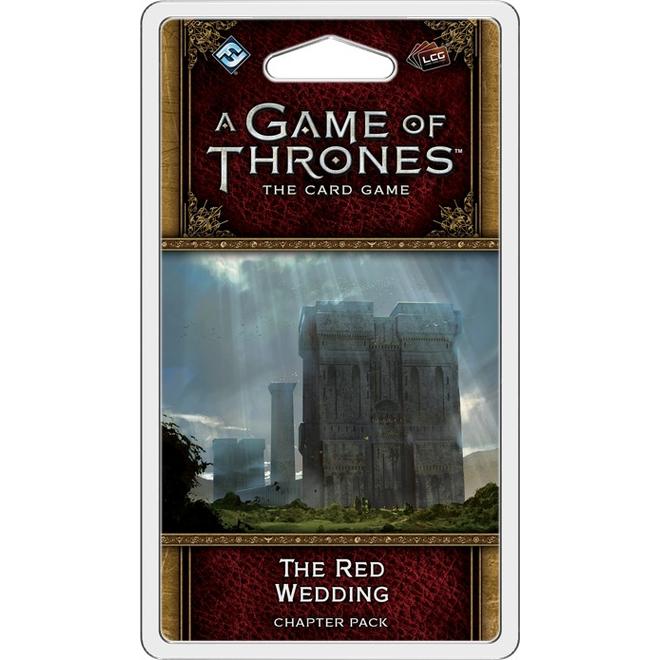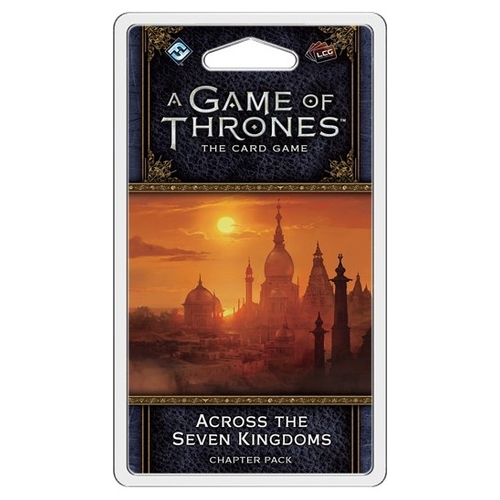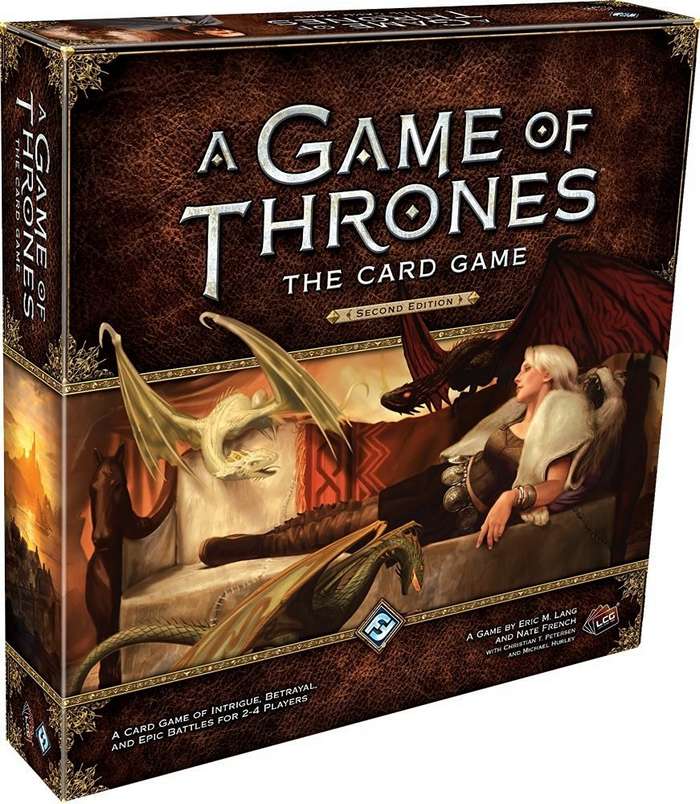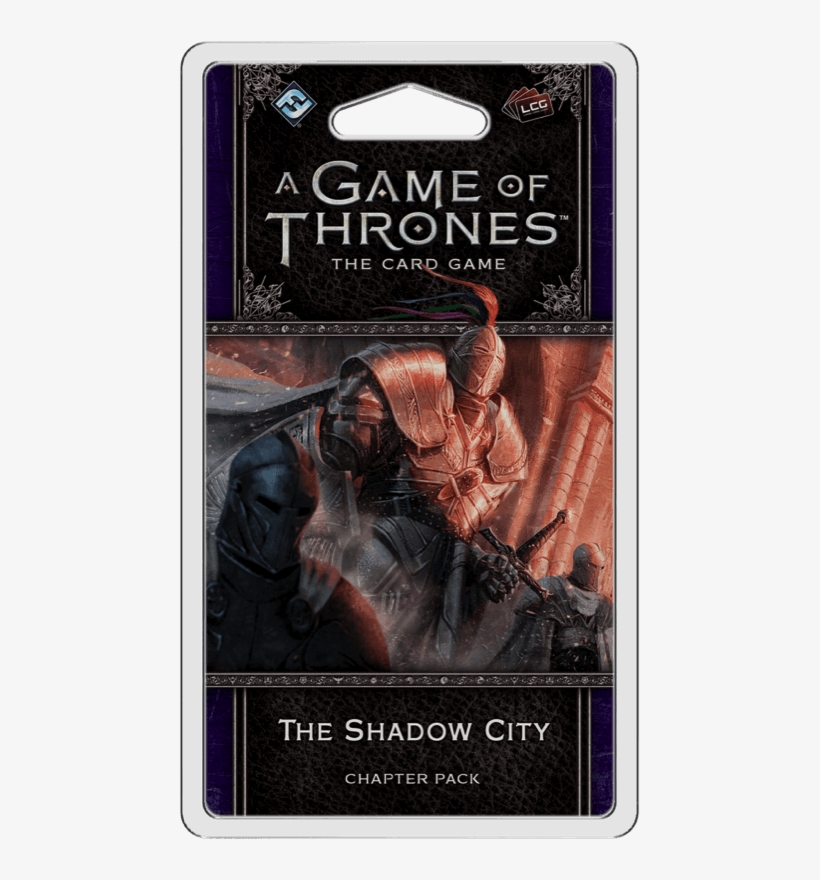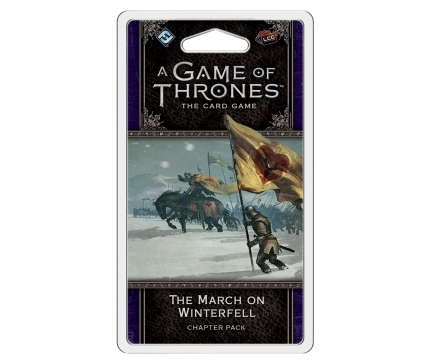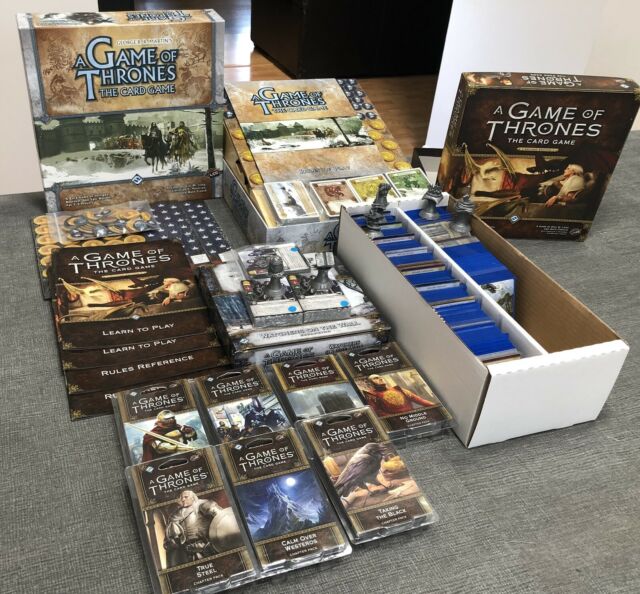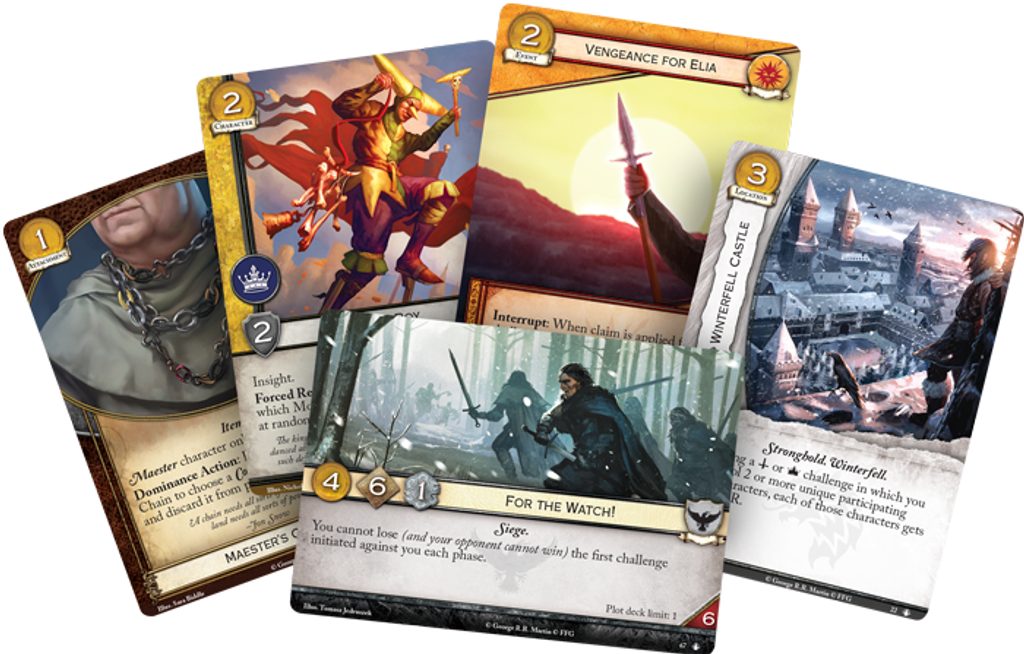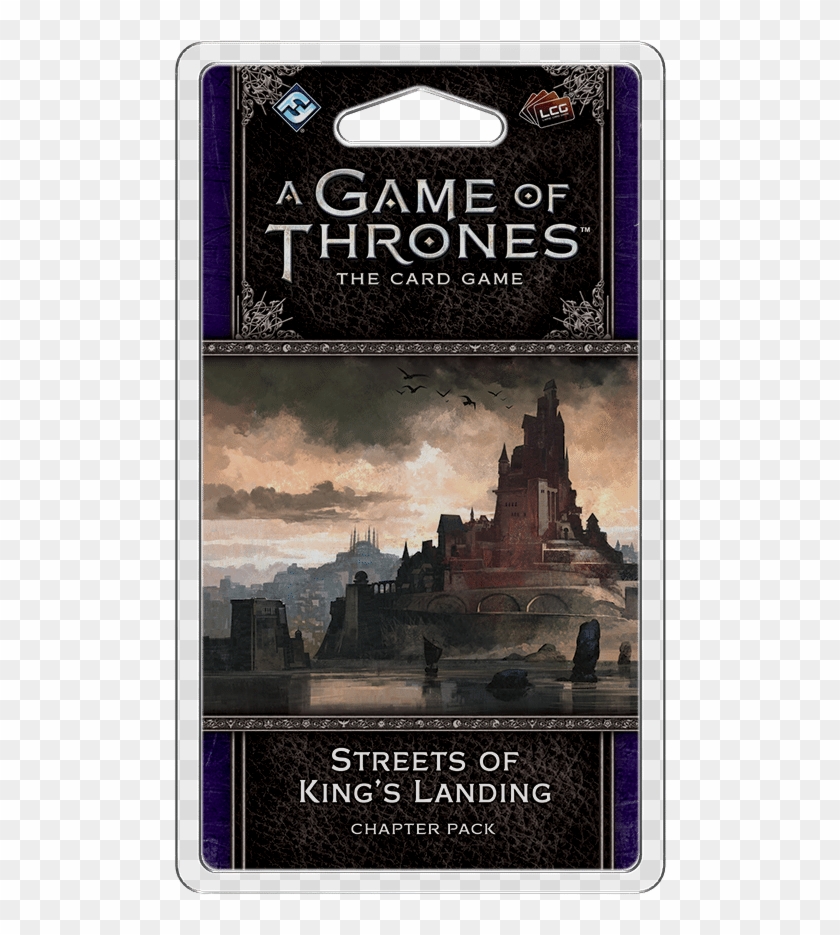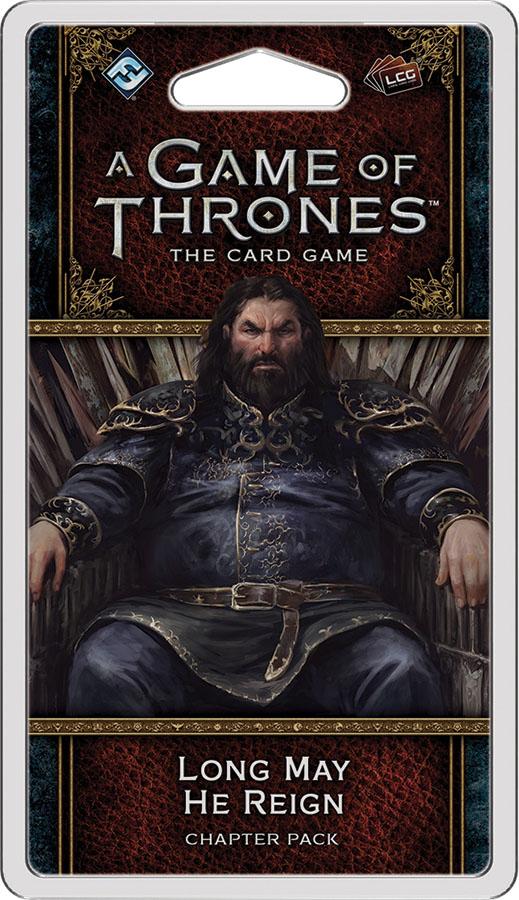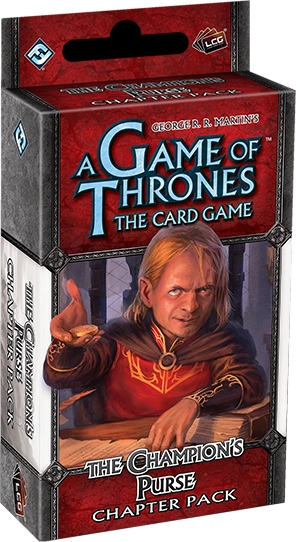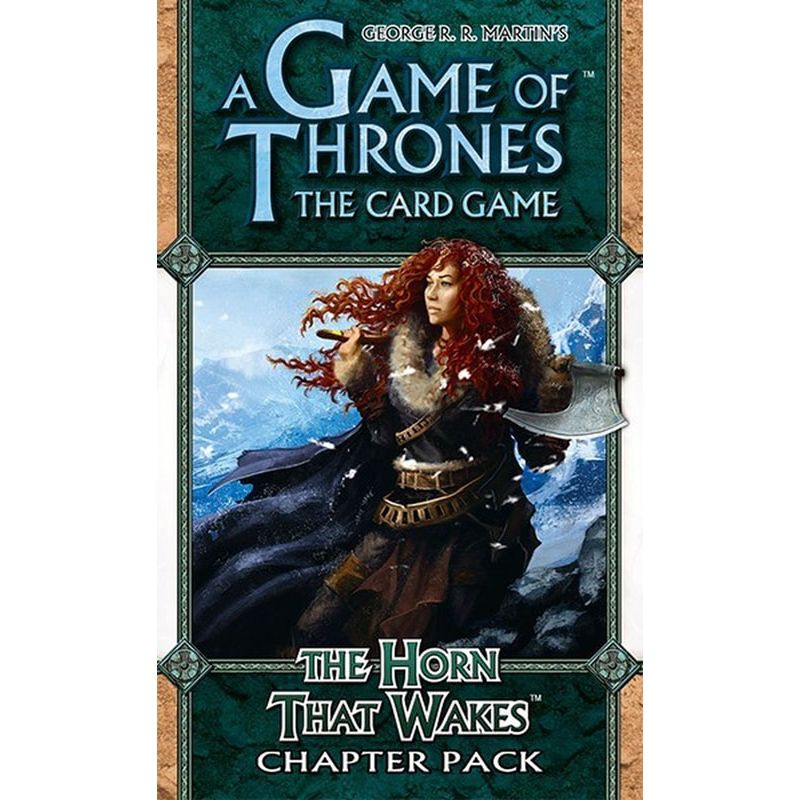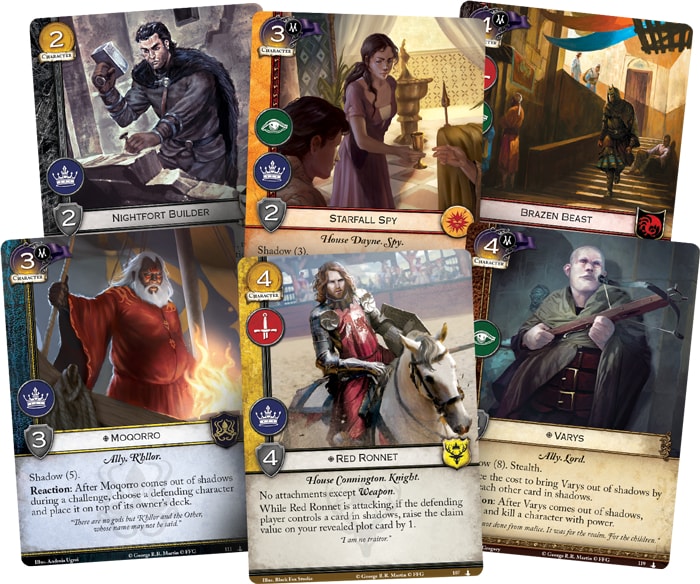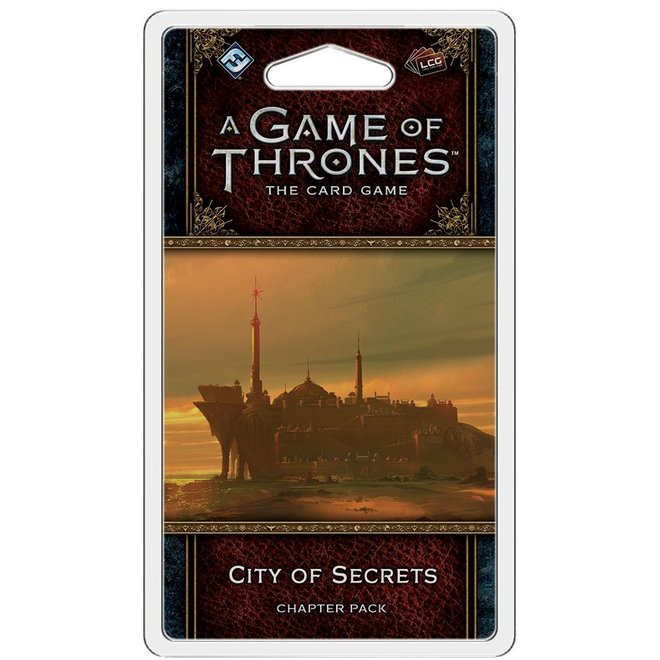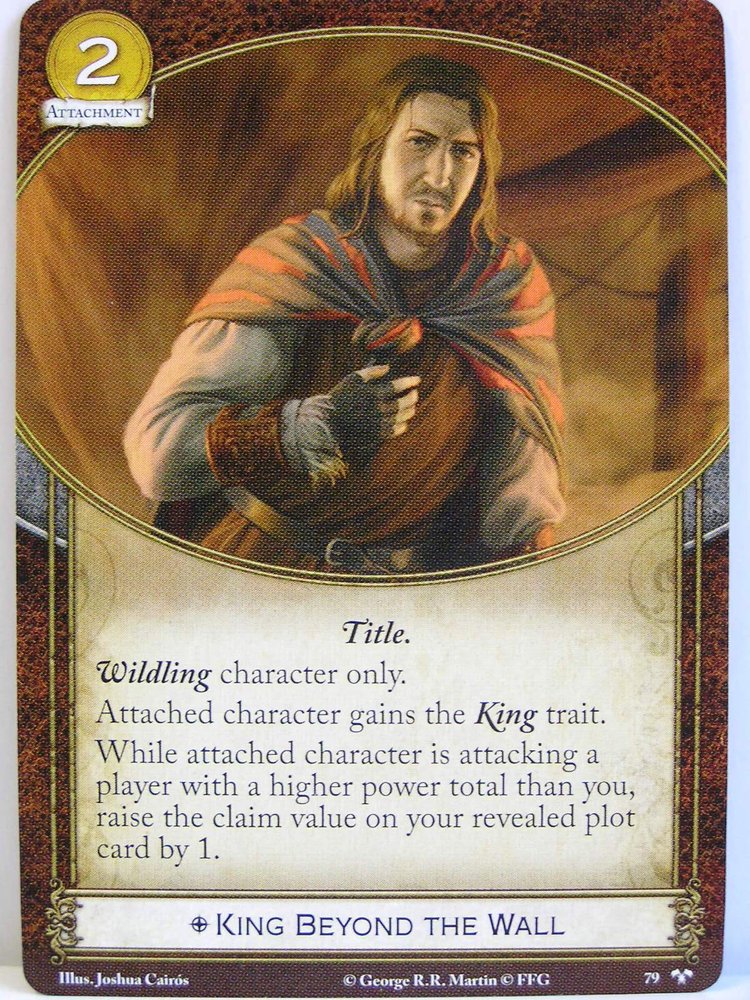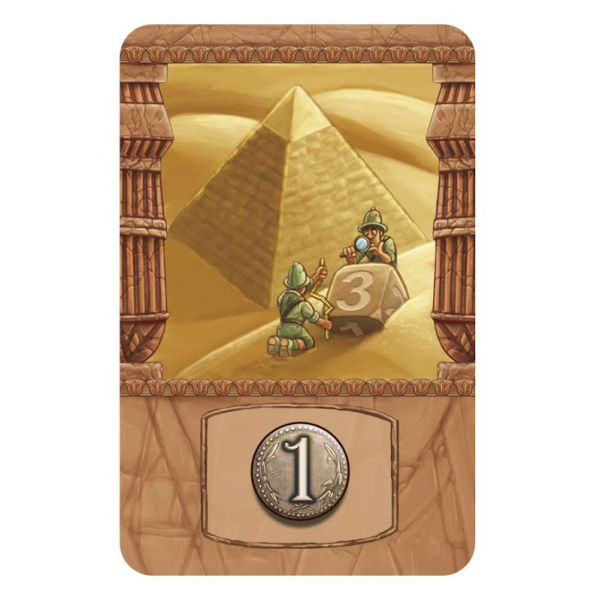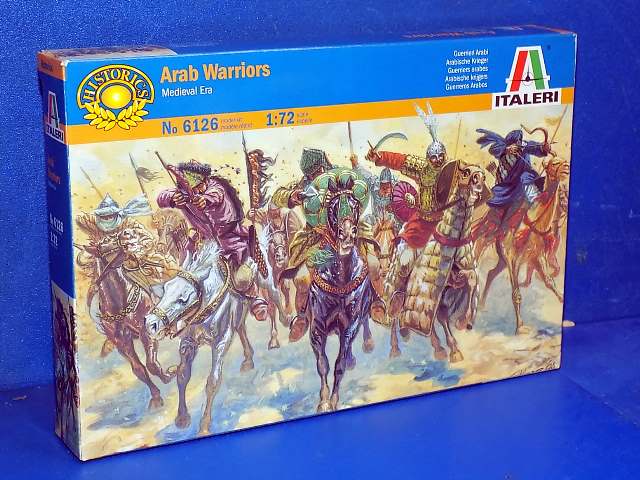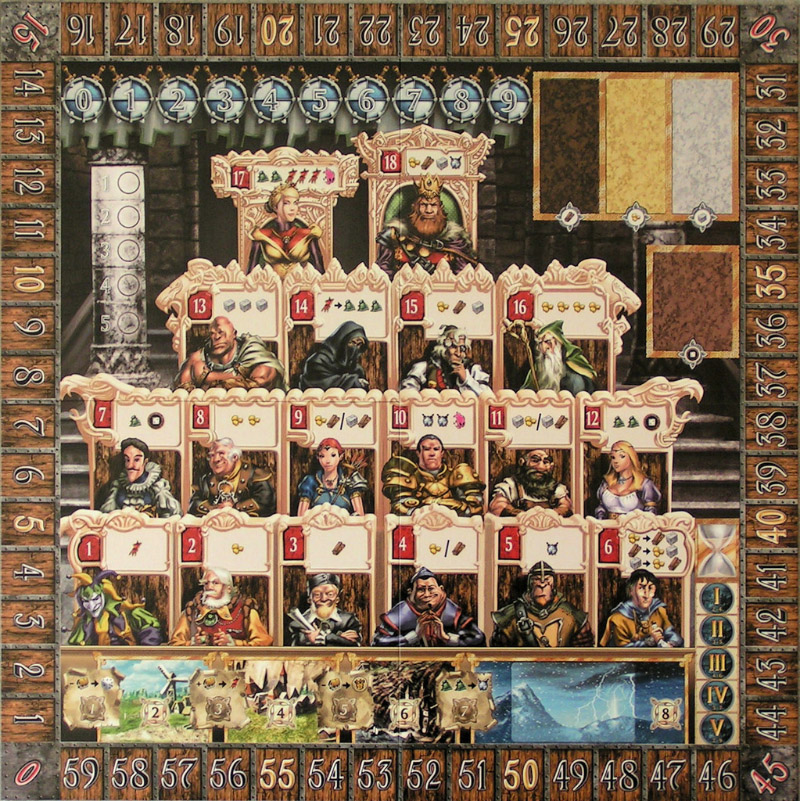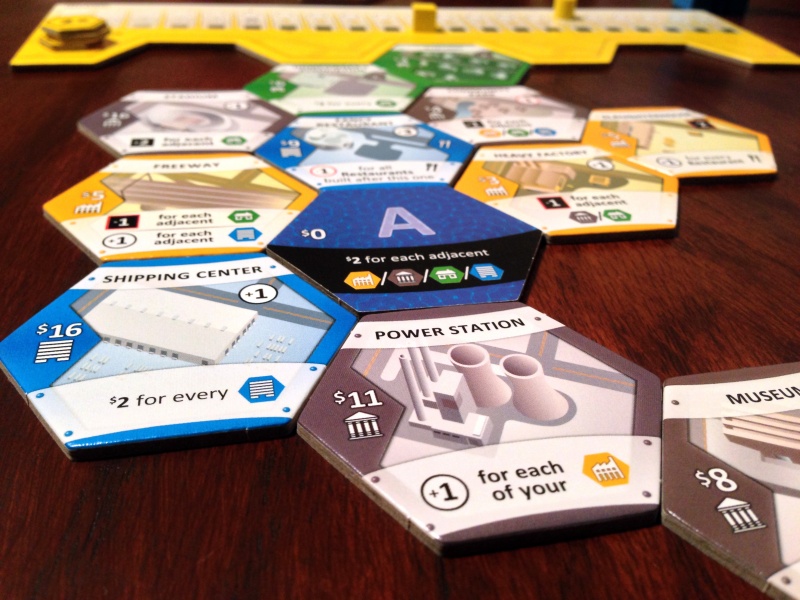Military, Intrigue, and Power
“This child king commands the wealth of Casterly Rock and the power of Highgarden. He has the Boltons and the Freys.” Lord Godric rubbed his chin. “Still … in this world only winter is certain. Ned Stark told my father that, here in this very hall.”
–George R.R. Martin, A Dance with Dragons
Inevitably, you and your opponents must clash as your Great Houses struggle to gain power. After choosing plots and drawing cards, all players have the chance to marshal new characters, locations, and attachments, mustering your fleets on the Iron Isles or calling your banners to Sunspear. After marshaling, you clash with other claimants to the Iron Throne! You can challenge your opponents on the field of battle, in back-alley intrigue, or in the political arena. There are three distinct challenge types in A Game of Thrones: The Card Game Second Edition.
A military challenge allows your warriors and armies to face your opponent’s forces in pitched battle. If you win a military challenge against your opponent, he must choose and kill a number of characters equal to the claim on your revealed plot card. Killed characters are placed in a dead pile, and unique characters cannot be played while they have a copy in the dead pile.
Intrigue challenges pit your schemers, assassins, and spies against your opponent in shadowy manipulation and subterfuge. If you win an intrigue challenge against your opponent, he must randomly discard a number of cards from his hand equal to your claim, reducing his options for future turns. If you can win enough intrigue challenges against your opponent, you can substantially reduce his ability to fight back against your forces.
Power challenges enable your most influential characters to undermine your opponent’s political position and increase your own. If you win a power challenge against your opponent, you move power tokens equal to your claim value from his faction card to your own. Power challenges are one of the principal ways for you to come closer to victory and the Iron Throne.
You can initiate a challenge by kneeling one or more of your characters, and your opponent can respond by kneeling character to defend. A character must bear the corresponding challenge icon to be declared as an attacker or defender in a challenge. You also have the chance to affect the outcome of a challenge by using special abilities and playing event cards. An unexpected tactic or sudden assassination may turn the tide of the challenge abruptly in your favor! After both players have decided to pass on the opportunity to take more actions, the side with the higher total STR is victorious.
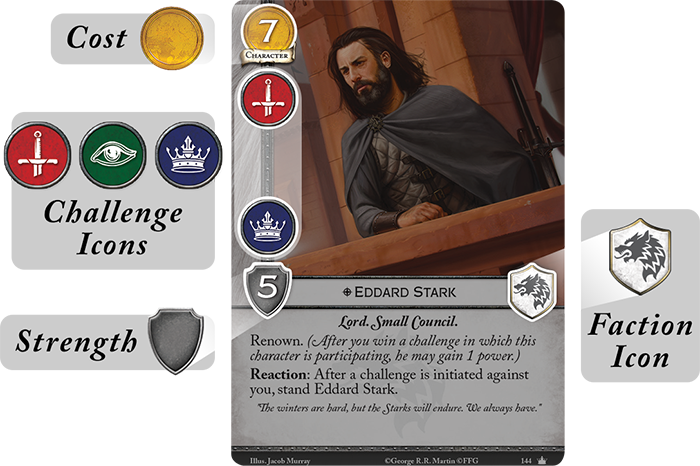
Every character in the game bears a certain amount of Strength, or STR, and the variables of STR and challenge icons give tremendous variety to the characters that support your claim to the Iron Throne. For example,
Eddard Stark
(Core Set, 144) has a STR of five and the military and power challenge icons. Eddard Stark features a high STR, but because he lacks the subtlety to possess an intrigue challenge icon, a single spy may slip right past him for an unopposed intrigue challenge. How you choose to challenge your opponent and which characters you commit to your attacks and defense are the principal ways you may gain superiority and victory in A Game of Thrones: The Card Game Second Edition.
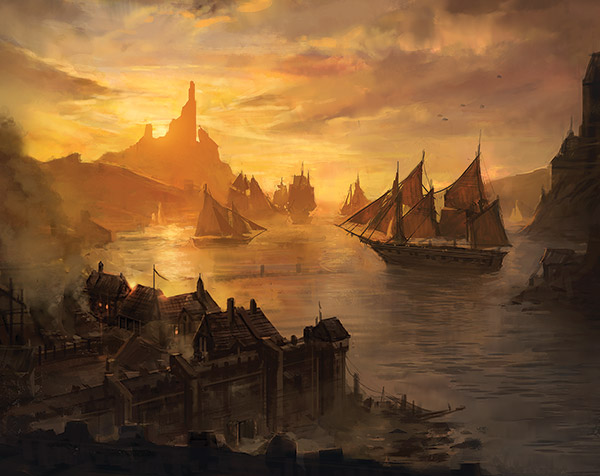
Tournament Resources
Recent News
13 Jun 2019
Organized Play

The Winter World Championships
Details on the Legend of the Five Rings and A Game of Thrones Worlds
28 Oct 2015
World Championships
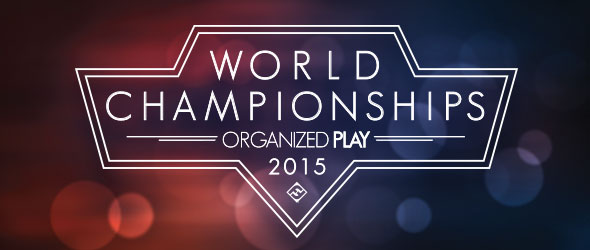
Join the Action from Home
Watch the 2015 World Championships Live
All news
The copyrightable portions of A Game of Thrones: The Card Game and its expansions are 2008 – 2013 Fantasy Flight Publishing, Inc. Licensed by George R.R. Martin. The names, descriptions, and depictions applied to this game are derived from works copyrighted by George R.R. Martin, and may not be used or reused without his permission. A Game of Thrones: The Card Game, its expansion titles, Living Card Game, LCG, the LCG logo and Fantasy Flight Supply are trademarks and/or registered trademarks of Fantasy Flight Publishing, Inc. All rights reserved to their respective owners.
The Tournament Begins
“The splendor of it all took Sansa’s breath away; the shining armor, the great chargers caparisoned in silver and gold, the shouts of the crowd, the banners snapping in the wind…and the knights themselves, the knights most of all.”
–George R.R. Martin, A Game of Thrones
A Game of Thrones: The Card Game Second Edition gives you the chance to battle for the Iron Throne in two unique game experiences. Two players can enter the lists to engage in a joust, fighting honorably for the glory of victory, or multiple players can partake in a chaotic and ferocious melee, adding new levels of treachery and backstabbing to the game. With a single Core Set of A Game of Thrones: The Card Game Second Edition, you can play a four-player melee, but with two or more Core Sets, you can play a melee with up to six players.
When you play a melee game of A Game of Thrones: The Card Game Second Edition, every player takes his place in the king’s Small Council by selecting a title. These titles come with pre-existing allegiances and enmities. If your chosen title supports another player’s title, you cannot challenge this player, although he is under no such restriction! If your title opposes another player’s title, you receive a bonus power token the first time you win a challenge against that player. Every title also confers a specific advantage to the player who selects it, drawing you deeper into the world of Westeros and granting you the tools to subvert your opponent’s plans.
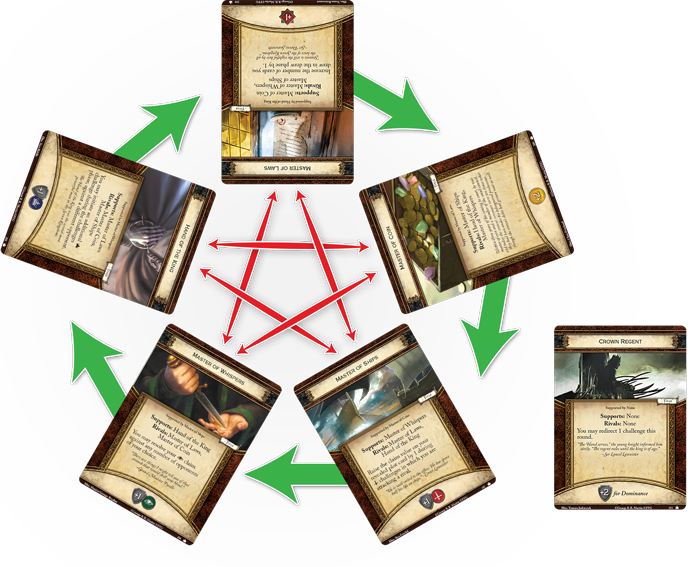
In the diagram above, green arrows show a title’s support and red arrows show which titles oppose each other.
You and your opponents return your titles and select new ones at the beginning of each round, so as the game continues, you will bear many different titles, shifting your allegiances in whichever way brings you closest to the Iron Throne!
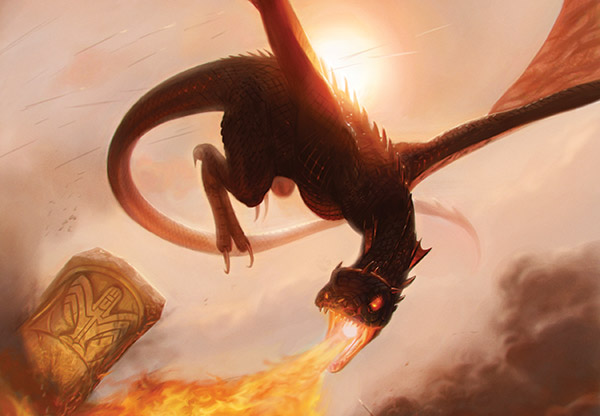
Plot Your Victory
“You should thank the gods that Varys the Spider is a part of this plot of yours.”
–George R.R. Martin, A Dance with Dragons
To win your way to the Iron Throne, you must command the characters that flock to your banner, but you must also weave cunning plots to shape the future of Westeros. To this end, you use two distinct decks: a plot deck and a player deck. The player deck contains the characters, locations, attachments, and events that you hold in your hand, marshal into play, and use to defeat your opponents and claim power for your faction. The plot deck, on the other hand, consists of seven carefully chosen plot cards, which represent schemes, tricks, and maneuvers that you may use to gain the upper hand in a game round.
The plot deck is not shuffled like your player deck. Instead, you must consider your available plots at the beginning of each round and select a new plot, forming a plan for how you will win your way closer to the Iron Throne. Your plot sets the rest of your plans in motion, determining your income for the round, your initiative value, how powerful your challenges will be, and how many cards you can keep in your hand at the end of the round. Your plot may also have a special effect that triggers immediately or persists throughout the round.

For example, as your plot, you may select
Wildfire Assault
(Core Set, 26). This plot has an income value of four, giving you four gold dragons to spend marshaling characters, locations, and attachments, and playing events for the rest of the round. Wildfire Assault also has an initiative value of seven. The player with the highest initiative value selects which player will play first for the round. The third number on the plot card is the claim value, which determines the power of your challenges, as we’ll explore below. Wildfire Assault also has a reserve value of six, meaning that at the end of the round, you must discard down to six cards. Finally, Wildfire Assault bears the text, “When Revealed: Each player chooses up to 3 characters he or she controls. Kill each character not chosen (cannot be saved.)” A deadly hail of wildfire can quickly thin the amount of characters in the game.
Because you can choose any unused plot in your plot deck at the beginning of a round, a well-constructed plot deck gives you tremendous flexibility to repel your opponent or seize the power you need to secure your claim to the Iron Throne. The best schemers in A Song of Ice and Fire always have plans within plans, and your plot deck gives you the chance to be just as prepared.

Make Your Challenges
Ned felt his anger rise. “You knew of this plot, and yet you did nothing.”
–George R.R. Martin
A Game of Thrones: The Card Game offers another unique element: the inclusion of a plot deck for each player. At the start of each round, before the table-wide battle for power, intelligence, and military supremacy ensues, each player selects a plot card from individual plot decks of seven cards. These cards trigger special, thematically driven effects that have repercussions for all players throughout the coming round and beyond. Some plot effects are positive, while others are devastatingly negative… but they all must come to pass, so players should wisely consider the order in which to reveal their plots throughout the game. The ever looming threat of destruction or loss due to a plot, whether generated by your own deck or by an opponent’s, adds another level of strategic depth to the game.
When the time comes for direct action against your opponents, you’ll find a wide range of choices based on your specific agenda. Unlike other card games, which limit you to only one kind of attack, A Game of Thrones: The Card Game gives you three options, each with its own rewards. A military challenge kills your opponent’s characters, an intrigue challenge limits your opponent’s choices by discarding his cards in hand, and a power challenge lets you steal your opponent’s power tokens for yourself. Since different characters (and different Houses) excel at different types of challenges, you’ll find yourself constantly adapting your round-by-round strategy, while you form a larger, long-term plan based on the strengths of your deck.
Joust or Melee
“Put not your trust in spiders, my lord.” That was scarcely anything Ned needed to be told.
–George R.R. Martin
In addition to this wealth of strategic depth, A Game of Thrones: The Card Game offers a robust and engaging multiplayer system. In games including three or more players, each player chooses a specific role from the king’s Small Council at the start of every round. In addition to conferring special bonuses on their owners, most roles support or oppose other roles, forbidding aggression against players they support, and rewarding aggression against those they oppose. Every alliance in A Game of Thrones: The Card Game is short-term, and multiplayer games are always unpredictable. With the inclusion of cards that potentially help your opponents, the capacity for deal-making and deal-breaking is vast. Be careful who you trust!
Valar Morghulis
Over the years of A Game of Thrones: The Card Game, from the original collectible card game to the second edition of the Living Card Game, many things have changed. Strategies were forged in battle, and counter-strategies were formed to answer those decks. The fortunes of the Great Houses rose and fell with changing times—after all, the very nature of the game as an LCG meant that a faction can never rest on its laurels. As the game changes and adapts, all factions and players must grow or die.
Still, there are some core aspects that have remained constant over the years. The plot deck guides your turns and gives you a measure of control over how your deck performs from game to game. Three distinct types of challenges give you three ways to attack your opponent’s position. And when characters die, they stay dead.
The nature of death in A Game of Thrones: The Card Game has made the ability to kill your opponent’s characters very powerful—an entire game can hinge on a brilliant sword strike or a glass of poison. So it’s understandable why a plot like
Valar Morghulis
(There Is My Claim, 80) can be expected to shape how the game is played for years to come.

On its surface, this plot is incredibly simple. It only reads, “When Revealed: Kill each character.” Obviously, the ability to wipe the board on demand is almost unbelievably powerful, but it’s balanced in a variety of ways. First, Valar Morghulis only offers you two gold—barely enough to afford even the cheapest characters. Although there are ways to gain more income with economy locations or plots like
The Long Plan
(Taking the Black, 16) or
Ranger’s Cache
(Wolves of the North, 52), in most circumstances, you’ll be unable to play more than a single character the turn that you play Valar Morghulis.
What’s more, Valar Morghulis has a claim value of zero, which essentially dictates that your challenges cannot touch your opponent unless you have ways to raise your claim like
Winter Is Coming
(Core Set, 159). Finally, a relatively low reserve value of five means you won’t be able to keep many cards over into your next turn, potentially forcing you to discard cards you would rather have kept.
Is the powerful effect of Valar Morghulis worth the cost of its statistical drawbacks? The answer, of course, depends on your deck. If you’re playing Valar Morghulis, you don’t want to flood the board with characters, only for them to be wiped out by this plot—you want to lure your opponent into overextending, destroy his hand to reduce his options, then strike with Valar Morghulis to create an opening. For more controlling decks, Valar Morghulis can be truly dangerous, allowing you to prolong the game, negating your opponent’s advantages until you’re ready to make your move.
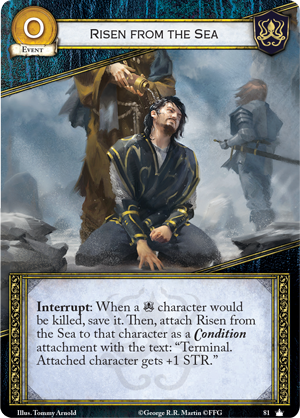
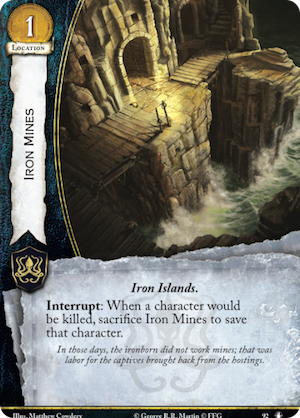
Valar Morghulis can also give you the chance to come back from a losing position. For instance, if you have two unique characters with duplicates and your opponent has a more powerful range of characters but no way to save them, you can play Valar Morghulis, save your own characters, and kill your enemies. Alternatively, factions like House Greyjoy may use Valar Morghulis more offensively, relying on an arsenal of save effects like
Risen from the Sea
(Core Set, 81) and
Iron Mines
(Calm over Westeros, 92) to protect your own characters while wiping out your opponent’s.
Choose Your House
“Give me honorable enemies rather than ambitious ones, and I’ll sleep more easily by night.”
–George R.R. Martin
In A Game of Thrones: The Card Game, players take control of one of the major Houses of Westeros, and they zealously compete for power. The first player to earn fifteen power tokens claims the Iron Throne and victory. Each House’s deck has different strengths and weakness based on the themes, characters, and locations of George R.R. Martin’s epic A Song of Ice and Fire series. Indeed, fans of Martin’s writing will find A Game of Thrones: The Card Game strikingly true to the novels, and newcomers to the saga will be drawn in by the strife, intrigue, and backstabbery that so many readers have come to love. House Stark’s strength, for example, is their military capabilities, while House Lannister’s cards concentrate on shocking and devious manipulations of the normal flow of the game. The Core Set even includes House cards for House Greyjoy and House Martell, and with the addition of just a few Chapter Packs, viable decks can be built for both!
World Champion Lists
Recent News
31 Jan 2020
Star Wars: X-Wing Second Edition
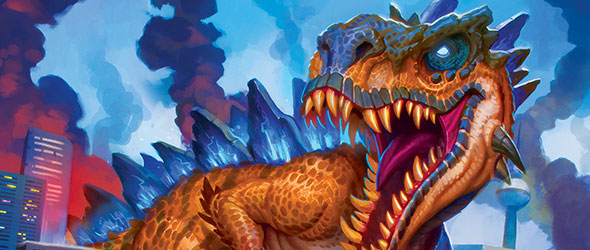
FFG Live in February
Take a Look at Upcoming FFG Livestreams
13 Jan 2020
A Game of Thrones: The Card Game
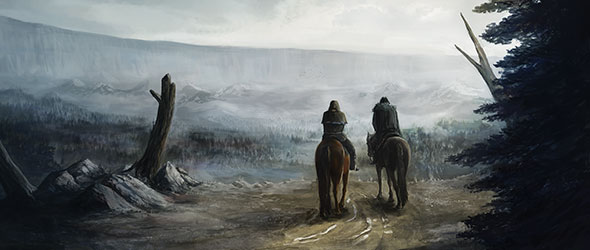
Take the Black
A New FAQ for A Game of Thrones: The Card Game
All news
The copyrightable portions of A Game of Thrones: The Card Game Second Edition is 2015 Fantasy Flight Publishing, Inc. Licensed by George R.R. Martin. The names, descriptions, and depictions applied to this game are derived from works copyrighted by George R.R. Martin, and may not be used or reused without his permission. A Game of Thrones: The Card Game Second Edition, its expansion titles, Living Card Game, LCG, the LCG logo and Fantasy Flight Supply are trademarks and/or registered trademarks of Fantasy Flight Publishing, Inc. All rights reserved to their respective owners.
What Are the Differences Between the Editions?
As A Game of Thrones: The Card Game transitions from its first iteration to the second edition, some aspects have been changed. These changes can be divided into three basic categories: elements being cut, elements being revised or updated, and new elements.
A number of elements are being cut from the new edition because they have been deemed obsolete or unnecessarily confusing. The influence resource was a holdover from the game’s CCG era, and because gold now persists through to the end of the round, influence is unnecessary. Another game mechanic that will disappear in the second edition is crests. Crests offered nothing to distinguish them from traits, and made the game more difficult for new players to learn. The first edition of A Game of Thrones: The Card Game also contained too many keywords for players to easily remember. In the second edition of the game, existing keywords have been pruned and some new keywords have been added to showcase the most interesting and essential interactions.
Other elements are being revised to improve the play experience of the game. The timing rules of the first edition were a frequent obstacle to players attempting to enjoy the game, and are being overhauled in the new edition. Moribund, passive effects with triggers, and save/cancel responses will be replaced with a more straightforward timing system that takes advantage of the Interrupt, Reaction, and Forced triggers that have been successfully employed in some of our newer LCGs.
Call Your Banners
“Martell brings some formidable companions, it would seem. Not one of the houses Pod had named was small or insignificant. Nine of the greatest lords of Dorne were coming up the kingsroad, them or their heirs, and somehow Tyrion did not think they had come all this way just to see the dancing bear.”
–George R.R. Martin, A Storm of Swords
You’ll take control of numerous factions in A Game of Thrones: The Card Game Second Edition. Each faction offers a unique playstyle, allowing you to call upon new tricks and tactics in any deck you play. You may command a longship with Asha Greyjoy or follow Syrio’s training with Arya Stark. You may safeguard the princes of Dorne with Areo Hotah. You may even pledge your strength to Tywin Lannister and support the lions’ claim to the Iron Throne!
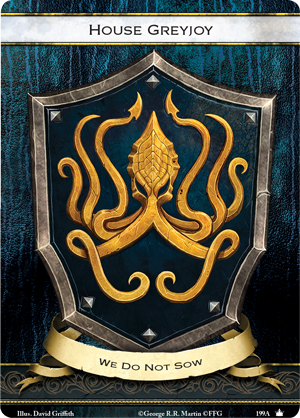
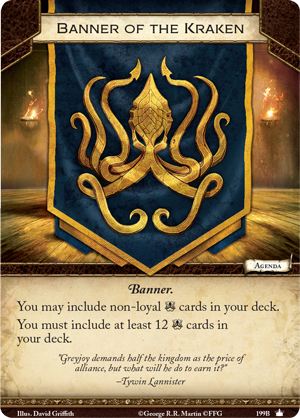 Faction cards are double sided: the front is the main faction card, while the reverse side is an agenda that allows you to include non-loyal cards of that faction in another deck.
Faction cards are double sided: the front is the main faction card, while the reverse side is an agenda that allows you to include non-loyal cards of that faction in another deck.
A starter deck for every faction is included in the Core Set. You can make your deck with cards from a single faction, but like A Song of Ice and Fire, your games of A Game of Thrones: The Card Game Second Edition are filled with alliances. Every deck has the option to use an agenda to call upon the support of another faction. If you call upon the support of a faction by using its agenda, you can include cards from that faction in your deck free of penalty. The exception to this rule is loyal cards. Loyal cards include characters unshakable in their devotion to their House, locations intrinsically tied to a faction, or events that represent tactics used only by a single faction. Loyal cards can never be included in another faction’s deck.


